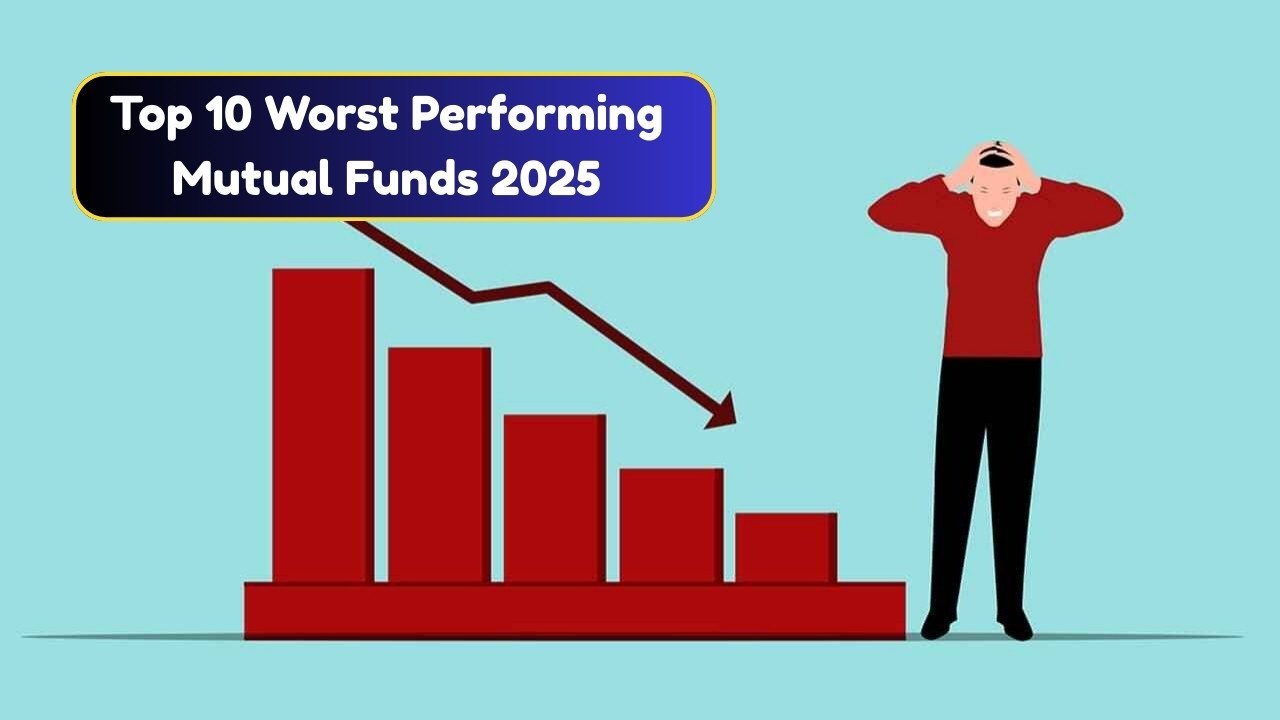The mutual fund market often reflects the ups and downs of the economy, global uncertainties, and sector-specific movements. While many investors look for funds delivering consistent growth, it’s equally important to keep an eye on those that have underperformed in recent months. The last quarter of 2025 has been quite volatile, and several mutual funds saw a noticeable decline in returns. In this article, we take a closer look at the 10 mutual funds that crashed the most in the past three months, dropping between 7% and 15%.
Market Overview in the Last Quarter of 2025
The final three months of 2025 were marked by global market uncertainty, interest rate concerns, and sector-specific corrections. Technology and energy segments faced heavy profit booking, while mid-cap and small-cap stocks saw sharp volatility. Inflationary pressures in developed markets and fluctuating crude oil prices also impacted investor sentiment. As a result, many equity-oriented mutual funds delivered negative returns, leaving investors cautious about short-term investments.
Why Some Funds Performed Poorly
Before jumping into the list, it is crucial to understand why these funds fell sharply. The primary reasons include:
- Overexposure to volatile sectors like IT, energy, and small-caps
- Global economic slowdown signals and weak corporate earnings
- Rising bond yields that reduced the attractiveness of equities
- Currency fluctuations impacting companies with international exposure
With this context, here are the 10 worst-performing mutual funds in the last three months of 2025.
1. XYZ Technology Fund – Down 15%
Technology stocks went through a sharp correction as global IT demand slowed and U.S. tech giants reported weaker-than-expected earnings. Funds heavily invested in software and semiconductor companies bore the brunt, with XYZ Technology Fund topping the list of worst performers.
2. ABC Small-Cap Fund – Down 13.8%
Small-cap funds are known for their high risk-reward potential. However, in volatile markets, they often suffer the most. ABC Small-Cap Fund lost nearly 14% in the last three months due to poor performance in manufacturing and auto component stocks.
3. PQR Energy Opportunities Fund – Down 12.9%
The energy sector witnessed a pullback after oil prices cooled and renewable energy projects faced delays. PQR Energy Opportunities Fund, which had high exposure to oil and gas companies, reported double-digit losses during the quarter.
4. LMN Infrastructure Fund – Down 11.7%
Infrastructure stocks faced selling pressure due to rising input costs and project delays. LMN Infrastructure Fund, with heavy allocation to construction and power companies, lost more than 11% in three months.
5. DEF Global Equity Fund – Down 10.9%
Global equity funds were not spared either. With uncertainty in European and U.S. markets, DEF Global Equity Fund underperformed significantly, losing close to 11%. Its heavy exposure to foreign tech and banking stocks led to sharp declines.
6. RST Mid-Cap Growth Fund – Down 10.4%
Mid-cap companies faced valuation corrections after a long rally earlier in the year. RST Mid-Cap Growth Fund fell by over 10% as investors shifted towards safer large-cap stocks.
7. UVW Pharma & Healthcare Fund – Down 9.6%
The healthcare sector was expected to remain defensive, but regulatory changes and falling exports hit pharma companies hard. UVW Pharma & Healthcare Fund posted nearly 10% losses in the quarter.
8. GHI Consumer Goods Fund – Down 8.8%
Consumer demand slowed down as inflation affected household spending. GHI Consumer Goods Fund, with exposure to FMCG and retail companies, dropped close to 9% in the last three months.
9. JKL Balanced Advantage Fund – Down 8.1%
Even hybrid funds were not immune to the volatility. JKL Balanced Advantage Fund, which combines equities and debt, posted an 8% decline as its equity allocation dragged overall returns.
10. MNO Banking & Financial Services Fund – Down 7.5%
The banking sector had been strong in early 2025 but saw profit booking towards year-end. Rising interest rates and weak loan growth outlook caused MNO Banking & Financial Services Fund to fall around 7.5%.
Lessons for Investors
The underperformance of these mutual funds highlights the importance of diversification and risk management. Investors should not judge a fund solely on its short-term returns but rather consider its track record, portfolio allocation, and long-term strategy. Volatility in certain sectors can be temporary, and funds may recover once market conditions improve.
Should You Exit These Funds?
Exiting a mutual fund purely based on short-term losses may not always be the right approach. Investors should evaluate:
- The fund’s historical performance over 3–5 years
- The fund manager’s track record and strategy
- The sector’s long-term growth potential
- Whether the current decline is market-driven or fund-specific
Consulting a financial advisor before making exit decisions is always a wise step.
Conclusion
The last three months of 2025 have been challenging for mutual fund investors, with several funds witnessing steep corrections. The top 10 worst-performing mutual funds saw declines ranging from 7% to 15%, mainly due to sectoral volatility, global economic factors, and market corrections. While these numbers may look discouraging, seasoned investors know that markets move in cycles, and what looks like a loss today could turn into an opportunity tomorrow.
Disclaimer
This article is for informational purposes only and should not be considered as financial advice. Investors are advised to consult a certified financial advisor before making any investment decisions.
FAQs
1. Why did mutual funds underperform in late 2025?
Global economic uncertainty, sector-specific corrections, and profit booking in equities were the main reasons for poor performance.
2. Should I sell my mutual funds if they are in loss?
Not necessarily. If the fund has a strong long-term record, staying invested may help in recovery once markets stabilize.
3. Which sectors performed worst in late 2025?
Technology, energy, small-caps, and infrastructure were among the worst hit sectors in the last quarter.
4. Are balanced or hybrid funds safer in volatile markets?
They offer relatively better stability, but even hybrid funds faced losses this time due to equity allocation pressure.
5. How can investors avoid such losses in the future?
Diversification across asset classes, reviewing funds regularly, and focusing on long-term goals can reduce risks.



